Why is it profitable to plant potatoes under straw and how to do it correctly?
Planting potatoes under straw is an opportunity to get a high yield on a small plot of land, bypassing such agricultural practices as deep digging of the soil, loosening, weeding and hilling. Caring for the plantings does not require physical effort and hassle, and you do not need a shovel to collect potatoes.
There are different methods of growing potatoes, but this method is the only one related to organic farming. How much the land gives away when growing potatoes, so much gets in return.
Pros and cons of growing potatoes under straw
One of the main advantages of this method is that the garden planted with potatoes requires minimal maintenance and hassle:
- no need for deep digging of the soil and careful selection of weed roots;
- you can plant on an area overgrown with grass, where nothing has been grown for a long time;
- no weeding is required because weeds cannot grow through a thick layer of hay;
- no need to huddle, instead you just need to add hay;
- the Colorado potato beetle and other pests rarely attack the garden where potatoes grow in hay;
- watering is needed only if hot dry weather lasts for a long time;
- there is no need to dig out the crop - it is harvested by pushing the dry grass aside and slightly pulling the bush;
- the soil is not depleted. Replenishment of nutrients occurs due to the fact that the hay gradually decomposes and becomes a fertilizer.
A little work is needed in the fall to prepare the garden for next year, and in the spring, when it comes time to plant potatoes.
Growing potatoes under straw has one drawback. It lies in the fact that this method is not suitable for everyone. If it is not possible to mow and dry the hay, to harvest the straw ourselves, then you will have to buy it. In some regions, hay costs so much that the cost of a grown crop will not pay off.
Important!
The mistake of many gardeners is that the hay is not stacked in a thick enough layer on the beds. Few tubers are formed under the thin layer on the roots. In addition, the tubers are exposed and turn green under the sun's rays, which makes them unsuitable for eating.
Site preparation for planting potatoes
The site where you plan to plant potatoes must be prepared in the fall.
- If nothing has grown in this place for a long time and the garden is overgrown with grass, it should be mowed.
- The cut grass is dried, placed in a stack and covered from rain and snow. The next year, it can be used to grow potatoes or be used as mulch for other vegetables.
- At a distance of 65-70 cm from each other, rows are marked for planting.
- In each row, the top layer of sod is cut off with a sharp shovel, turned over and placed in its original place. During the winter, the green part of the weeds overheats, and the roots dry out. The sod is not touched between the rows.
- They sow thickly in prepared rows siderates, lightly cover with a hoe and watered.
- Two weeks after their shoots, the green part is cut off with a hoe or flat cutter and left on the site.
- If there is manure, it is scattered over the beds.
In this state, the garden is left until spring.
Planting potatoes
Potato preparation is carried out as usual. It is taken out of the cellar in advance for germination, and left in a bright room at a temperature of 12-17 °. If by the time of planting the eyes have not hatched, these tubers are discarded.
In the spring, when the soil warms up, holes are made in the beds at a distance of 25-35 cm from each other. Each hole is spilled with water and poured into a handful of ash.The presence of wood ash in sufficient quantities must be taken care of in advance. It is a valuable fertilizer containing potassium. Potassium is necessary for the growth of tubers and their bulk.
A potato is placed in each hole with its eyes up. You can sprinkle with a small layer of soil, but this is not necessary.
The tubers are covered with hay, its layer should be 30-35 cm, no less. Hay is also poured into the aisles, but its thickness may be less - 20 cm is enough. It works like mulch and prevents weeds from breaking through.
Advice
It is undesirable to lay fresh cut grass in the garden. It is strongly compacted, does not allow air to reach the roots, mold forms on it.
In this state, the site is left until the foliage sprouts appear and grow up to 20 cm.
Care
Planting care consists in watering and covering the growing tops with hay.
Watering is rarely carried out. In regions where it rains regularly, watering is not needed at all. Hay prevents the soil from drying out between rains, and the roots of potatoes do not suffer from a lack of moisture. In hot and dry summers, you can check whether watering is required or not, if you raise the layer of hay. If the soil under it is wet, watering is not necessary, if it is dry, watering is necessary.
For the first time, the tops are additionally covered with hay after the seedlings grow up to 20 cm. Only a couple of top leaves are left, the rest should be covered with straw. It is not necessary to re-fill the row spacing with hay or straw.
Depending on the growth of the potatoes, over the summer, 1-2 times the tops are covered with hay, each time leaving 3-4 upper leaves on the surface. If there has been no rain for a long time, then it is advisable to shed the ridge before each mulching.
Straw when growing potatoes in the usual way
Straw mulching can also be carried out when growing potatoes in the usual way. This method of mulching is suitable for dry areas, the moisture in the soil lasts a long time, and the amount of watering is reduced.
In the event of heavy rainfall or if the soil contains a lot of sand, the straw will prevent the soil from creeping and exposing the tubers.
Mulch plantings with straw after the last hilling has been carried out. A layer of straw can only be laid on the ridges, and if there is no deficit in it, then in the aisles.
Harvesting
There is no need to use a shovel when harvesting potatoes grown in straw. The soil under the mulch is soft and loose, the main part of the tubers is on its surface, under a layer of dry grass. It is enough to remove the straw and easily pull the tops.
Having pulled a potato bush out of the hay, you can see that many additional roots and tubers have formed on the lower part of the trunk. Due to this, the yield is twice the usual.
Potato tubers are clean, without adhering soil. Before storage, it is enough to dry them a little.
The straw can be left to reheat in the beds, put in a compost heap, or dried and reused next year.
Output
The method of growing potatoes under a layer of straw is effective and does not require much effort and attention. If the garden is small, and there is enough dried grass, then the potato yield can be doubled.
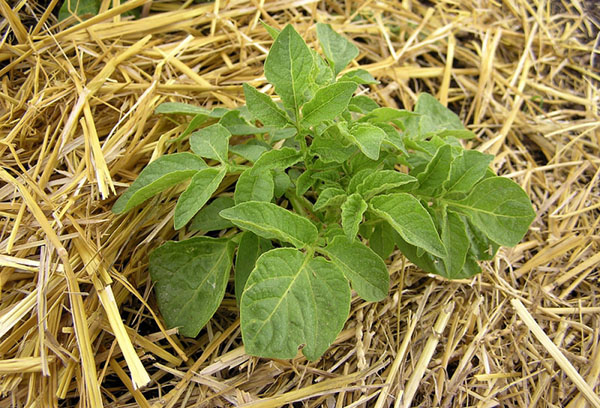

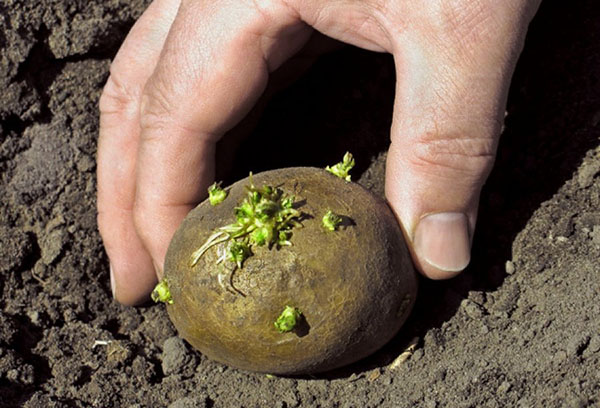
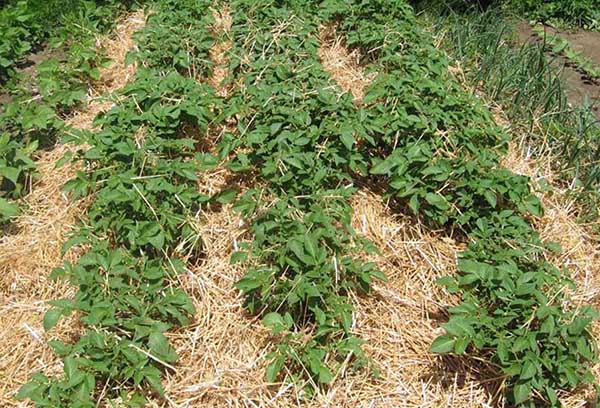
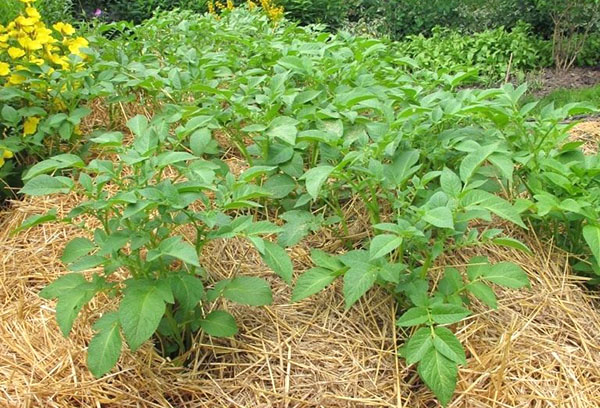

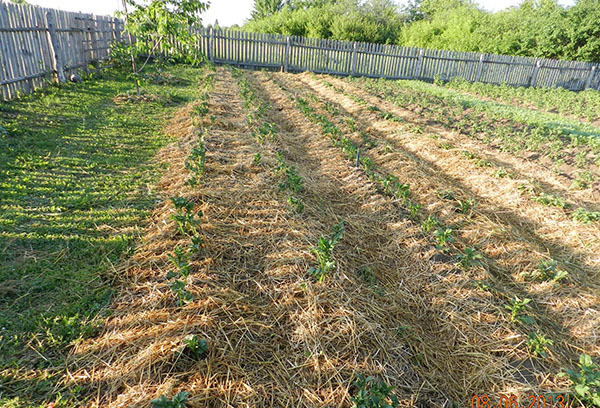
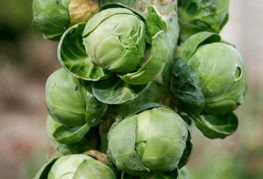
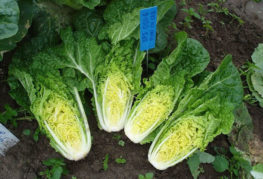
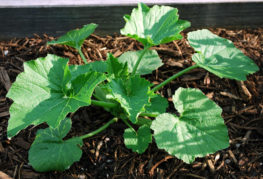
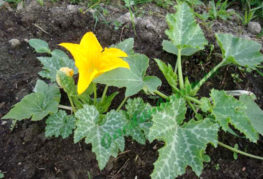
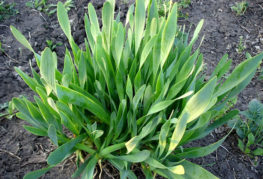
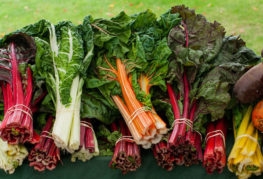
and will be published shortly.